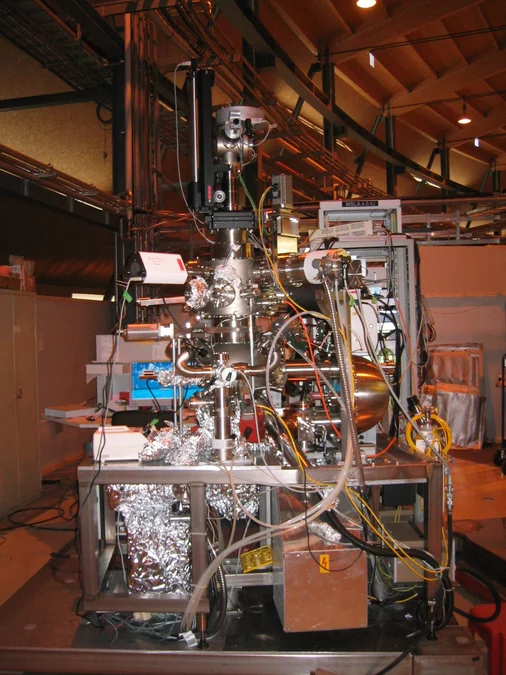ULTRA: Low-temperature high-resolution angle-resolved photoemission spectroscopy
The ULTRA endstation is a new low-temperature high-resolution endstation that replaces the former high-resolution system at SIS. ULTRA is designed for demanding investigations of the electronic band structures of novel complex materials. The endstation is based around a new PSI-designed 6-axis manipulator that can operate from room temperature down to 4 Kelvin (4.4 K in continuous flow mode, 3.8 K in "single shot" mode). Like its so-called "CARVING" predecessors, the new manipulator has high mechanical resolution and repeatability and low thermal drift. ULTRA is furthermore equipped with a Scienta Omicron DA30-L spectrometer offering "DA" deflection-mode scanning, energy resolution down to 1.6 meV, and angular resolution of 0.1°.
Sample conditions
As of ULTRA's launch in the winter of 2020, samples can be cleaved in vacuum on the manipulator at any temperature. Surface deposition of alkali metals is also possible. As ULTRA is a new station, new features/improvements are regularly being incorporated, with plans for simple sputtering/annealing/evaporation capabilities to be added in the coming months.
Sample holders for ULTRA are based on the popular "Omicron" format.
An MCP-LEED system is available on the endstation for characterizing sample surfaces.
For more information please contact the beamline staff.
COPHEE: Spin- and angle-resolved photoemission spectroscopy
The COmplete PHotoEmission Experiment (COPHEE) measures the three-dimensional spin polarization vector of a electronic state in combination with its energy vs. momentum dispersion, thus rendering a spin-resolved and structure determination. The spectrometer is equipped with two orthogonally mounted classical Mott detectors, allowing the simultaneous detection of all three spatial components of the spin expectation value. In the spin-resolved modus the energy and angular resolution are 80 meV and ±0.75° respectively, whereas 25 meV and ±0.3° can be reached without spin resolution.
Samples can be transferred into UHV by a fast load lock and temporarily stored under UHV conditions. The endstation contains all typical surface science techniques with regard to sample preparation and characterization (evaporation, gas dosing, ion sputtering, annealing, LEED). Currently the temperature range during measurements is 15-300 K on the 6-axis "CARVING" manipulator.
For more information on the details of the endstation, analysis methods, or a review of the technique and possible application the following publications are recommended:
- J. H. Dil, Topical Review in J. Phys. Condens. Matter 21, 403001 (2009).
- F. Meier, J. H. Dil, and J. Osterwalder New Journal of Physics 11, 125008 (2009)
- M. Hoesch et al., J. Electron Spectrosc. Relat. Phenom. 124, 263 (2002).
